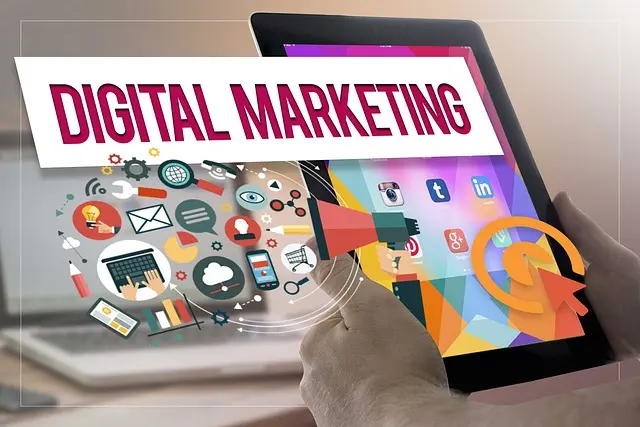Email Marketing Automation: A Guide to Creating a Successful Campaign
In today’s digital landscape, businesses aiming to foster growth and connect with their audience increasingly rely on the pivotal tool of email marketing automation. This article delves into the significance of email marketing automation and explores how successful campaigns can propel business expansion.
Brief Overview of the Importance of Email Marketing Automation
Email marketing automation involves using software to streamline and personalise the communication process with your audience. It goes beyond traditional email campaigns by allowing businesses to send targeted messages based on user behaviour, preferences, and interactions. This automated approach not only saves time but also ensures that your messages are timely and relevant.
The Impact of Successful Email Marketing Campaigns on Business Growth
Effective email marketing campaigns have a profound impact on business growth. Subsequently, by delivering tailored content to the right audience at the right time, businesses can nurture leads, enhance customer engagement, and drive conversions. The ability to build and maintain relationships through automated, targeted communication is a key driver in turning prospects into loyal customers.
As we delve deeper into creating a successful email marketing automation campaign, the subsequent sections will guide you through essential strategies, from planning your strategy and building a high-converting email list to crafting compelling content and implementing and optimising automation workflows. All in all, let’s embark on this journey to harness the power of email marketing automation for your business’s success.
Planning Your Email Marketing Automation Strategy
Defining Campaign Goals and Objectives
To embark on a successful email marketing automation journey, start by crystalising your campaign goals and objectives. Clearly outline what you aim to achieve, whether it’s boosting product sales, increasing brand awareness, or driving website traffic. Specific and measurable goals provide the foundation for a focused and effective strategy.
Craft goals that align with your overall business objectives. For instance, if expanding your customer base is a priority, set goals related to lead generation and subscriber acquisition. If nurturing existing relationships is crucial, focus on engagement metrics like open rates and click-through rates.
Identifying Target Audience Segments
Understanding your audience is paramount in creating targeted and impactful email campaigns. Identify distinct segments within your audience based on demographics, behaviour, or purchasing history. Moreover, tailoring your messages to these segments ensures relevance and resonance, fostering stronger connections with your recipients.
Segmentation allows for personalised communication, increasing the likelihood of engagement. Consider factors such as location, preferences, or past interactions when dividing your audience. This not only enhances the user experience but also boosts the effectiveness of your email marketing efforts.
Selecting the Right Email Marketing Automation Platform
Additionally, choosing the appropriate email marketing automation platform is a pivotal decision. Evaluate platforms based on features, scalability, and ease of use. Ensure compatibility with your business size and objectives. For example, popular options like Mailchimp, ActiveCampaign, or HubSpot offer a range of tools to streamline your automation processes.
Prioritise platforms that provide robust analytics and reporting capabilities. The ability to track and measure the performance of your campaigns is crucial for refining strategies and achieving long-term success.
 Building a High-Converting Email List
Building a High-Converting Email List
Strategies for Growing and Segmenting Your Email List
Growing a robust email list is the cornerstone of effective email marketing automation. Employ diverse strategies such as website sign-up forms, social media promotions, and lead magnets to attract new subscribers. Segment your list based on factors like interests, demographics, or purchase history to tailor your messages for maximum impact.
Utilise incentives like exclusive offers or downloadable content to encourage sign-ups. This not only attracts new subscribers but also sets the stage for personalised communication.
Best Practices for Obtaining and Maintaining Subscriber Consent
Subscriber consent is paramount in maintaining a positive sender reputation and complying with data protection regulations. Furthermore, implement transparent opt-in processes, clearly explaining the type of content subscribers can expect. Utilise double opt-ins to ensure genuine interest, and provide easy opt-out options to maintain trust and compliance.
Regularly update subscribers on your email frequency and content changes. As a result, keeping them informed enhances engagement and reduces the likelihood of spam complaints.
Leveraging Customer Data to Personalise Email Content
Personalisation is the key to captivating your audience. Leverage customer data to tailor your emails to individual preferences and behaviours. for example, use purchase history, browsing patterns, and interaction data to craft personalised content that resonates with your audience.
Dynamic content that adapts based on user behaviour enhances engagement. Implement personalised recommendations, targeted offers, and relevant product information. All in all, by leveraging customer data effectively, you create a more meaningful connection with your subscribers, fostering loyalty and driving conversions.
 Crafting Compelling Email Content
Crafting Compelling Email Content
Designing Attention-Grabbing Subject Lines
The journey to a successful email marketing automation campaign hinges on creating subject lines that intrigue and captivate your audience. For instance, craft concise, compelling subject lines that spark curiosity and convey the value of opening your email. Use action verbs and urgency to prompt immediate engagement, enticing recipients to explore further.
Experiment with A/B testing to identify the subject line styles that resonate best with your audience. Consistently refining and adapting your approach ensures sustained interest and higher open rates.
Creating Engaging and Relevant Email Copy
Once you’ve enticed your audience with a compelling subject line, the next step is to deliver content that holds their attention. Furthermore, craft clear and concise copy that communicates your message effectively. Focus on the recipient’s needs and benefits, addressing pain points and providing solutions.
Break down your content into short paragraphs and use bullet points to enhance readability. In addition, inject personality into your writing to create a conversational tone, establishing a connection with your audience. Keep the language simple and jargon-free to ensure broad understanding.
Incorporating Multimedia Elements for Visual Appeal
Visual elements breathe life into your emails, enhancing engagement and conveying information more effectively. Integrate eye-catching images, graphics, and videos to complement your written content. All in all, ensure that multimedia elements align with your brand aesthetic and contribute to a cohesive storytelling experience.
Overall, optimise images for quick loading, keeping in mind that many users access emails on mobile devices. Use alt text to provide context for images, improving accessibility and ensuring a positive user experience.
 Implementing and Optimising Automation Workflows
Implementing and Optimising Automation Workflows
Setting Up Trigger-Based Automation Sequences
Unlock the full potential of your email marketing automation by creating trigger-based workflows. These sequences respond to specific user actions, such as sign-ups or purchases, delivering timely and relevant content. Streamline the customer journey by mapping out these triggers and automating responses, ensuring a seamless and personalised experience.
Utilise intuitive automation platforms that simplify the process, allowing you to set triggers, define actions, and test workflows effortlessly. In fact, the result is a dynamic and responsive system that caters to your audience’s needs in real-time.
A/B Testing to Refine and Improve Campaign Performance
Continuous improvement is at the heart of successful email marketing automation. Harness the power of A/B testing to refine your campaigns. Experiment with variations in subject lines, content, and visuals to identify what resonates most with your audience. Moreover, analyse the results and implement the learnings to enhance engagement and conversion rates.
A/B testing is an ongoing process that ensures your campaigns stay relevant and effective. Regularly test different elements to adapt to changing audience preferences and maintain a competitive edge.
Monitoring Key Metrics and Adjusting Strategies Accordingly
Effective email marketing automation hinges on data driven decision making. Monitor key metrics such as open rates, click-through rates, and conversion rates to gauge campaign performance. Identify trends and patterns, and use this insight to adjust your strategies.
Regularly review and refine your automation workflows based on the data collected. This iterative process ensures that your campaigns remain adaptive and responsive to the evolving needs and behaviours of your audience.
As we conclude our guide on creating a successful email marketing automation campaign, implementing and optimising these workflows not only streamlines your processes but also positions your business for sustained growth and success in the digital landscape.
Find out more about what’s happening within the digital marketing in our blog column.









